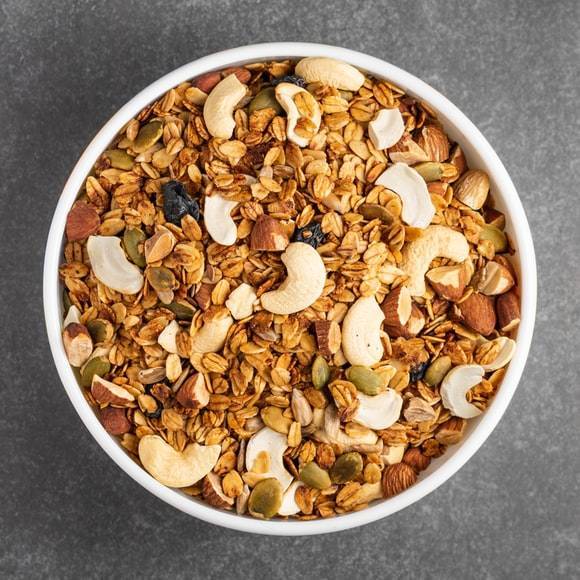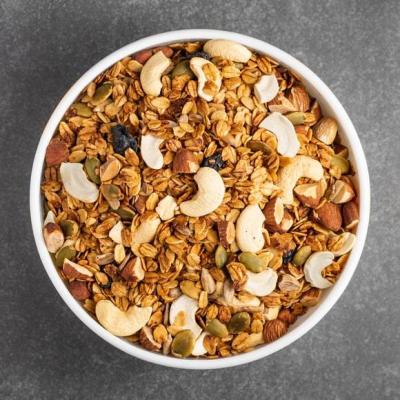Many people suffer from a lack of fiber, due to the prevalence of modern diets such as the "Keto" diet, intermittent fasting, and low-carb diets, which often overlook certain categories of fiber-rich foods or severely restrict the quantity of food consumed, according to a report published by Bicycling. The situation worsens when products are promoted with vague phrases on packaging, claiming to be "made with whole grains," which can apply to any item containing any amount of whole grains. However, the fiber percentage in various whole grain products should range from 3.5% to 18%, meaning they contain anywhere from just 0.5 grams of fiber to nearly 3 grams of fiber per serving. Therefore, it is essential to select products containing at least 3 grams of fiber per serving, ideally 5 grams of fiber per serving.
### Importance of Fiber
The U.S. Food and Drug Administration (FDA) defines fiber as a type of carbohydrate that is not easily digested in the small intestine. Fiber is naturally found in plant foods, fruits, whole grains, nuts, and legumes. Regarding how much fiber should be consumed, U.S. dietary guidelines suggest an ideal fiber intake based on daily calorie consumption; for every 1,000 calories consumed, 14 grams of fiber should be included. The general recommendation is for females to consume 25 grams of fiber daily, while males should aim for 38 grams of fiber daily.
### Types of Fiber
There are 3 types of fiber:
- **Insoluble fiber:** Helps speed up digestive processes, allowing food and waste to move more quickly.
- **Soluble fiber:** Absorbs water like a sponge and hinders the absorption of fats and cholesterol in the body while helping to control blood sugar levels.
- **Functional fiber:** Essentially a fiber supplement. This type is extracted from natural sources and then added back to foods or powders.
Nutritionist Katherine Brooking recommends consuming more of the first two types of fiber over the third due to their availability in many delicious and varied foods, along with their numerous health benefits that promote overall body health. Numerous studies and reviews have concluded that fiber consumption contributes to reducing the risk of chronic diseases such as cancer, diabetes, and heart disease. The benefits of fiber extend beyond just feeling full; they also aid in promoting gut health.
### 7 Fiber-Rich Foods
Nutritionists recommend gradually introducing fiber-rich foods and ensuring plenty of water intake. One could start by adding one serving of a fiber-rich food to one meal daily and then increase gradually according to individual tolerance. Experts explain that consuming a lot of fiber without adequate fluids can lead to constipation, bloating, or stomach pain.
1. **Legumes**: Legumes, including beans, lentils, chickpeas, and cannellini beans, are high in fiber and protein. They can easily serve as a meat substitute.
2. **Nuts and Seeds**: Nutritionists state that "nuts and seeds are not only a good source of fiber, but they are also packed with vitamins, minerals, and healthy fats."
3. **Berries**: Besides being rich in vitamin C, almost all types of berries top the fruit category for fiber content. Berries provide a feeling of fullness whether eaten on oats, as juice, or as a standalone snack.
4. **Pears**: Pears are high in fiber and contain many vitamins. They can be eaten raw or cooked with a sprinkle of cinnamon.
5. **Whole Grains**: Nutritionists recommend choosing whole grain bread instead of white bread or whole wheat pasta instead of regular pasta, brown rice instead of white rice, and quinoa instead of white rice. Oatmeal is also a smart choice for a breakfast filled with whole grains and fiber.
6. **Avocados**: Avocados are famous for healthy fats, but they are also surprisingly an excellent source of fiber.
7. **Bananas**: Bananas are significant sources of potassium and fiber. Both green and yellow bananas can be purchased and ripened at different rates throughout the week. Experts recommend peeling bananas, cutting them into small pieces, and then freezing them for later use in thickening smoothies or mashing them into a "nice cream."




